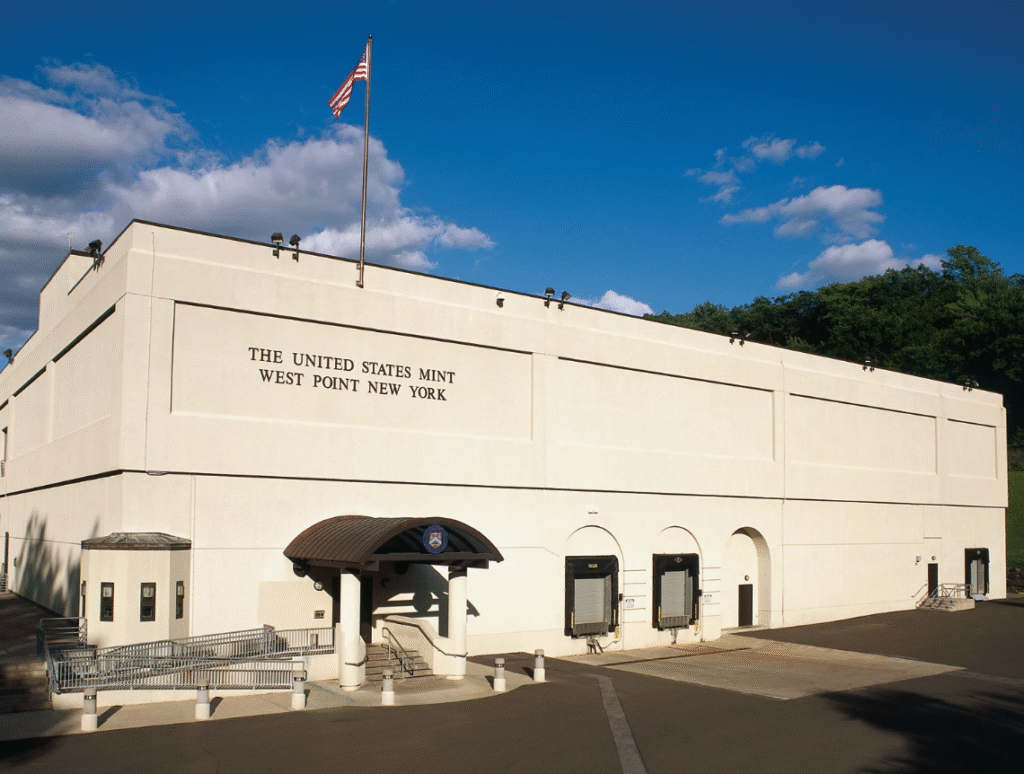When people think of America’s most secure precious metal reserve, Fort Knox immediately comes to mind. But what if we told you there’s a lesser-known fortress with a similar role, only for silver?
Welcome to the West Point Mint, often referred to as the “Fort Knox of Silver.” While it’s one of the most secure and important U.S. Mint facilities, what makes it truly remarkable is the vast amount of silver it has stored on behalf of the federal government, and the critical role silver continues to play in both industry and investment.


What is the West Point Mint?
The West Point Mint began life in 1937, not as a coin-making facility, but as a humble silver bullion depository. Tucked away in New York’s Hudson Valley near the U.S. Military Academy, it stored massive quantities of silver long before it ever struck a coin.
In 1988, it officially became a branch of the U.S. Mint. Since then, West Point has been responsible for producing some of the country’s most iconic bullion coins, including American Silver Eagles, American Gold Eagles, and commemorative coins. But even with its minting capabilities, West Point’s real fame comes from something else: its historic role as the nation’s primary silver storage facility.
Why It’s Called the “Fort Knox of Silver”
The nickname didn’t come out of nowhere. For decades, West Point was home to one of the largest official silver stockpiles in the United States. Like Fort Knox, which famously protects the nation’s gold, West Point was built to protect a different strategic metal: silver.
During the 20th century, silver was essential to both the economy and national defense. To ensure the country had enough supply for industrial and military use, the U.S. government stored hundreds of millions of ounces of silver at West Point. The sheer volume and the security surrounding the facility earned it its “Fort Knox of Silver” reputation.
RELATED: The Gold of Fort Knox
Even though much of that original stockpile has since been reduced, West Point still plays a vital role in storing silver and minting high-quality silver bullion coins.
The Strategic Silver Reserve
Why was silver so important that the government felt it needed its own vault? The answer lies in its versatility. Silver is not only a precious metal—it’s a strategic resource. It was used heavily in military electronics, photographic equipment, and coinage throughout the 20th century.
The Strategic and Critical Materials Stockpile Act, passed in 1946 and overseen by the federal government, included silver as a key component. West Point was chosen as one of the secure sites to store this vital reserve, reinforcing its role in national security and monetary policy.
Silver’s Role Then and Now
In the past, silver powered everything from early camera film to fighter jet components. Today, it’s just as relevant, if not more.
Modern silver applications include:
- Solar panels and clean energy systems
- Electric vehicle batteries and charging infrastructure
- Medical devices and antimicrobial technologies
- Investment-grade bullion coins like the American Silver Eagle
This broad usage ensures that silver remains in high demand and continues to be a core asset in the global precious metals market.
Carrying on the Silver Legacy Today
At our family-owned precious metal refinery, we honor silver’s rich history, and its modern value, by working with businesses to buy scrap silver and offer select silver coins to collectors and investors. Whether you have old industrial material, dental silver, or flatware, there’s value waiting to be reclaimed.
Silver is more than a shiny metal—it’s a strategic asset. And like the U.S. government once did at West Point, today’s businesses can benefit from recognizing its worth and putting it to productive use.
Get a Real-Time Quote for Your Scrap Silver
Sign up for your free account on our business portal to get an instant, real-time quote for your scrap silver and discover the lasting value of this essential metal.

